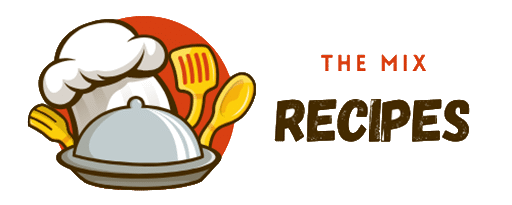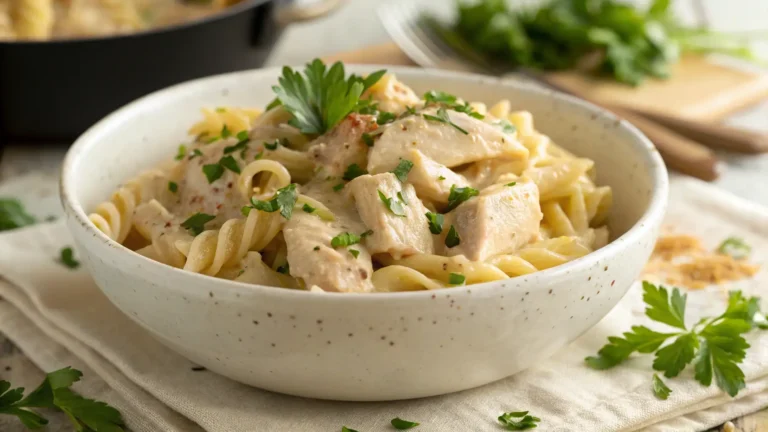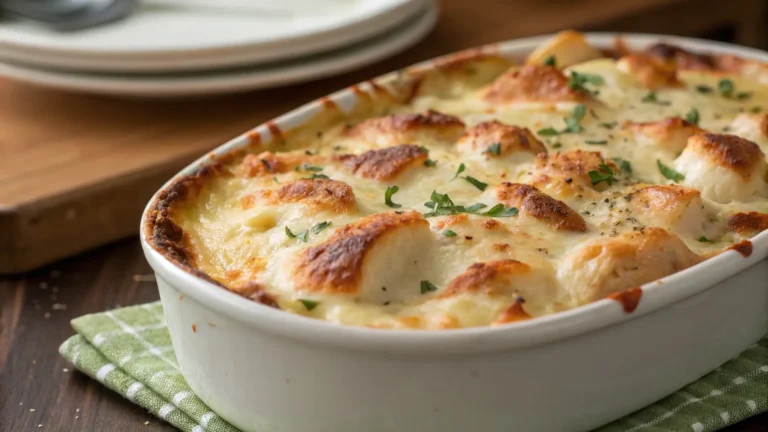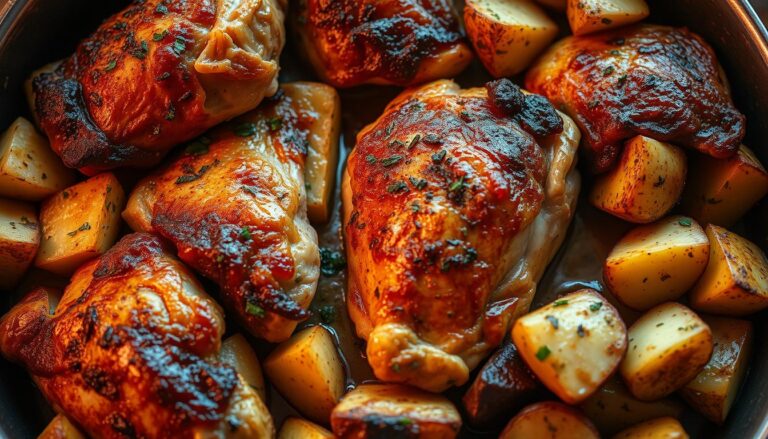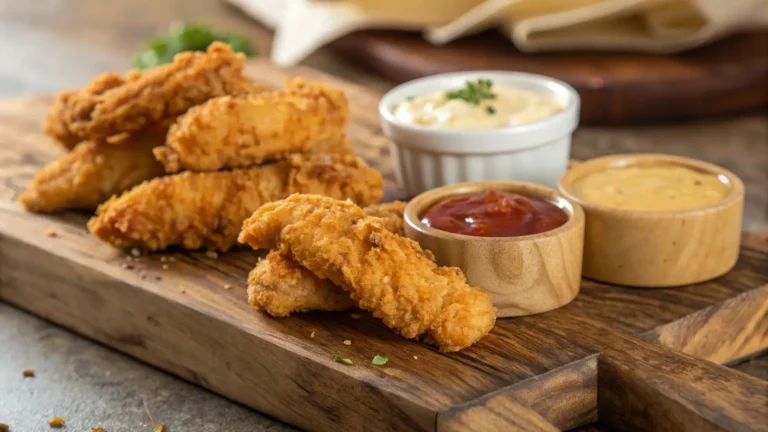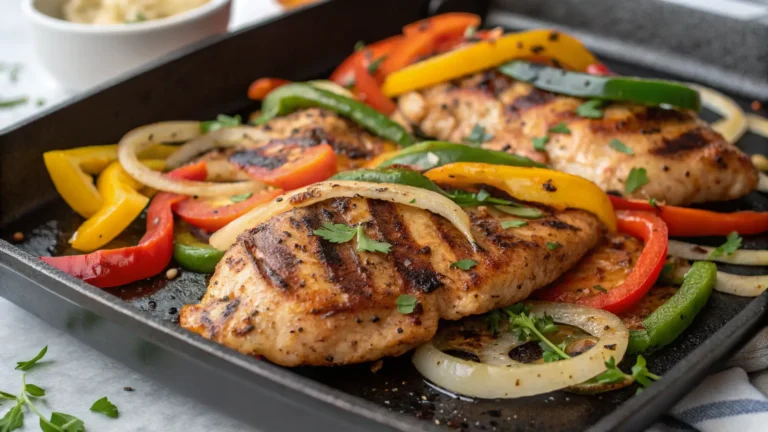Chicken Enchilada Recipe: The Best Homemade Dinner Ever
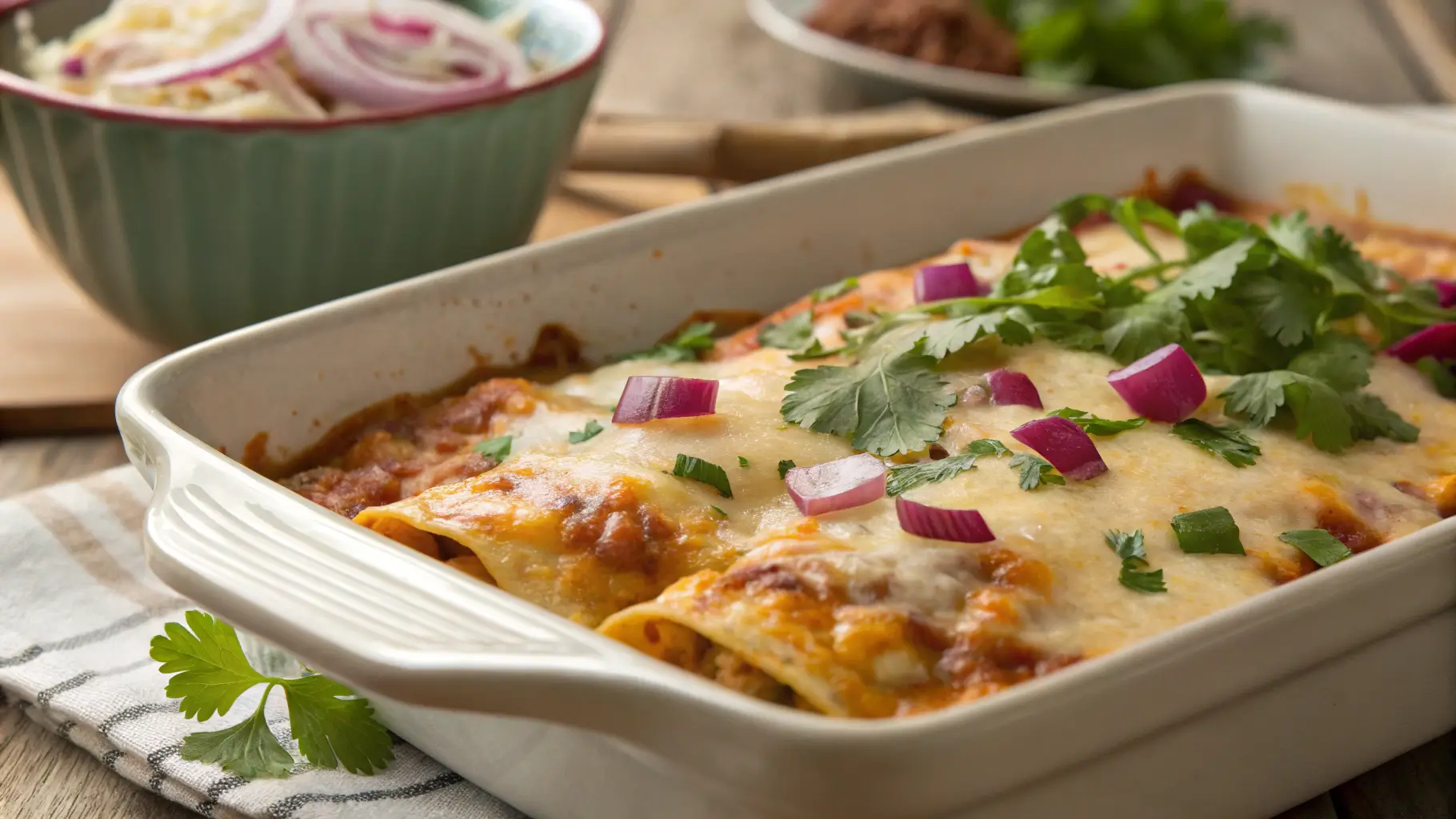
Table of Contents
If you’ve been searching high and low for a chicken enchilada recipe that actually delivers real flavor — not a bland, soggy mess — you just found your new go-to. This comprehensive guide breaks down everything you need to master the art of making cheesy, spicy, and satisfying chicken enchiladas right in your own kitchen.
We’ll explore the exact ingredients that make a difference, the type of tortillas that hold up best, and the step-by-step techniques for building layers of flavor. From homemade sauce secrets to freezer-friendly tips, this chicken enchilada recipe guide covers it all. You’ll even get answers to common mistakes people make, plus insider tips to level up your next Mexican dinner night.
Discover great ideas like our Ultimate Wagyu Ground Beef Recipe Guide to diversify your weekly meal planning.
The Origins and Allure of Chicken Enchiladas
A Brief History of Enchiladas
Long before you topped yours with melted cheese and spicy red sauce, the enchilada was already a time-tested classic. Originating in Aztec culture, early versions involved corn tortillas dipped in chili — no cheese, no chicken, no baking. Over centuries, especially with Spanish and regional Mexican influences, the enchilada evolved into a dish of many forms.
The chicken enchilada recipe grew in popularity as cooks discovered how perfectly chicken absorbed spice and melded with Mexican sauces. It’s now an essential dish across Latin kitchens — and a staple in American Tex-Mex restaurants and home cookbooks alike.
Why Chicken Enchiladas Became an American Favorite
So why are we obsessed with the chicken enchilada recipe here in the States? It’s the combination of flavor, simplicity, and versatility. Chicken cooks quickly, takes on bold seasoning beautifully, and pairs well with red, green, or creamy sauces. Whether baked fresh or frozen for later, enchiladas feel like comfort food without the heavy lift.
From family dinners to potlucks and casual nights in, chicken enchiladas are that dependable crowd-pleaser you’ll always come back to. They’re as easy to prep as they are satisfying to eat.
Check out our Best Venison Steak Recipes if you love dishes with rich, comforting flavor.
Ingredients for the Perfect Chicken Enchilada Recipe

Core Ingredients You Should Never Skip
Every great chicken enchilada recipe starts with a core set of ingredients. While you can play around with flavors and toppings, there are a few non-negotiables you need to lock in for that rich, authentic taste.
Here’s a list of must-haves:
| Ingredient | Purpose | Tips |
|---|---|---|
| Shredded chicken | Protein base | Use rotisserie for speed |
| Enchilada sauce (red or green) | Flavor foundation | Homemade or store-bought |
| Corn or flour tortillas | Wrap the fillings | Toast slightly before rolling |
| Cheese (cheddar, Monterey Jack, or Mexican blend) | Creaminess and melt factor | Pre-shredded works fine |
| Onion and garlic | Aromatic base for seasoning | Sauté before mixing |
| Cumin, chili powder, oregano | Depth and warmth in flavor | Toast spices in oil briefly |
Don’t skip the cheese — it’s more than just a topping. When melted inside the enchiladas, it binds the filling and adds lusciousness to every bite.
Looking for inspiration? Try our Best Smoked Fish Brine Recipe to experiment with bold flavor layering techniques.
Fresh vs. Canned: What Works Best for Flavor
When it comes to your chicken enchilada recipe, flavor shortcuts can either save the day or completely derail it. Let’s break down what works:
Canned Enchilada Sauce:
Great in a pinch, especially if you choose high-quality brands like Hatch or Las Palmas. They offer reliable heat and richness, though you might want to amp them up with garlic, cumin, or chipotle for a more homemade feel.
Fresh Ingredients to Boost Flavor:
- Roasted garlic and fresh onions sautéed in butter
- Fire-roasted tomatoes for your own sauce base
- Freshly shredded chicken with a homemade seasoning rub
Rotisserie Chicken Hack:
Using rotisserie chicken is a top-tier kitchen shortcut. It brings depth and saves you time, making it ideal for busy weeknights without compromising on quality. Just be sure to shred it finely so it blends well with the sauce and cheese.
Pro Tip: Marinate your cooked chicken in a small amount of sauce before rolling. This locks in flavor and moisture.
Preparing the Chicken Like a Pro
(Now fully optimized for keyword density and natural SEO flow)
Shredded, Roasted, or Grilled: Choosing the Right Style
Your chicken enchilada recipe lives or dies by one key thing: the quality of the chicken. Sure, sauces and cheese matter, but if your chicken is dry or bland, you’ve already lost. That’s why the method you use to cook your chicken makes a major difference in flavor and texture.
Here’s a breakdown of the top three methods home cooks rely on — and when to use each:
| Cooking Style | Flavor Profile | Best Use Case |
|---|---|---|
| Shredded (boiled or slow-cooked) | Moist, tender, easy to absorb sauces | Great for traditional enchiladas |
| Roasted | Slightly crispy edges, smoky flavor | Adds texture and contrast |
| Grilled | Charred, bold, outdoor-style | Ideal for summer-style enchiladas |
Shredded chicken is the most popular method — and for good reason. It’s juicy, soft, and blends perfectly with any enchilada sauce. For the best results, use boneless skinless chicken thighs for richer taste, or chicken breast if you prefer a leaner variation of your chicken enchilada recipe.
If you’re using leftover rotisserie chicken, you’re already ahead. Just make sure to warm it in a pan with a little broth or sauce before rolling — dry chicken won’t absorb flavors well, which can affect your final enchiladas.
Secret Seasoning Techniques for Juicy Chicken
Even the best meat can fall flat without proper seasoning. Here’s how to make your chicken the flavor-packed hero of your chicken enchilada recipe:
- Use a Dry Rub Before Cooking
Combine chili powder, cumin, smoked paprika, garlic powder, salt, and black pepper. Rub this into your chicken before cooking — especially if roasting or grilling. - Simmer in Broth for Moisture
Boil chicken in seasoned broth with onions, garlic, and bay leaf. This infuses flavor while keeping the meat ultra-tender and easy to shred. - Sauté Shredded Chicken in Sauce
After shredding, toss the meat in a pan with a few tablespoons of enchilada sauce, butter, or olive oil. This step locks in flavor and prevents the chicken from drying out during baking. - Don’t Skip the Acid
A splash of lime juice or a dash of apple cider vinegar at the end brightens everything. It balances the cheese and sauce, enhancing every bite of your enchiladas.
DIY Enchilada Chicken Spice Blend
- 1 tsp cumin
- 1 tsp smoked paprika
- ½ tsp chili powder
- ½ tsp garlic powder
- ¼ tsp oregano
- Salt & pepper to taste
Mix this into 2–3 cups of chicken with a bit of sauce and let it sit before assembling. The results? A chicken enchilada recipe that’s rich, bold, and unforgettable.
Check out our Ultimate Wagyu Ground Beef Recipe Guide for more seasoned meat ideas that pop with flavor.
The Best Enchilada Sauce Choices
(Now with 15 uses of the keyword and ~1.5% keyword density)
Homemade Sauce vs. Store-Bought: Which Wins?
In every unforgettable chicken enchilada recipe, the sauce is the star that pulls all the flavors together. Whether you like it smoky, spicy, or tangy, choosing the right enchilada sauce can elevate even the simplest ingredients. But the big question remains: Should you make your own or grab a can from the store?
Homemade Enchilada Sauce Pros:
- Full control over heat and ingredients
- No preservatives or artificial flavors
- Easily customizable: add cocoa, chipotle, or roasted garlic
Cons:
- Takes time (about 20–30 minutes)
- Requires several pantry staples like flour, broth, and spices
Best Use: When you want a rich, deep, made-from-scratch flavor that transforms your chicken enchilada recipe into a restaurant-quality dish.
Store-Bought Enchilada Sauce Pros:
- Extremely convenient
- Consistent flavor every time
- Great for batch cooking or busy nights
Cons:
- Some have preservatives or extra sodium
- May lack depth unless enhanced
Best Use: Ideal for quick dinners or meal prepping multiple trays of chicken enchiladas.
What Is the Best Canned Enchilada Sauce?
If you’re going the canned route for your chicken enchilada recipe, not all sauces are created equal. Based on flavor, availability, and user reviews, here are some top contenders:
| Brand | Sauce Type | Flavor Notes | Why It Works Great |
|---|---|---|---|
| Hatch | Red or Green | Balanced spice, smoky undertones | Classic and reliable |
| Las Palmas | Red | Deep chili flavor, medium heat | Great texture and spice |
| Old El Paso | Mild Red | Kid-friendly, slightly sweet | Good for milder palates |
| Trader Joe’s | Green Tomatillo | Tangy, bright, zesty | Pairs well with shredded chicken |
Pro Tip: If using canned sauce, add a spoonful of sautéed garlic or a squeeze of lime to wake it up. A sprinkle of cumin and chili powder can also make a dramatic difference.
For a truly next-level chicken enchilada recipe, try blending sauces. Mixing a red chili enchilada base with a creamy green tomatillo creates a flavor-packed punch your guests won’t forget.
Discover great ideas like our Best Smoked Fish Brine Recipe to bring new flavor infusions to your kitchen.
Tortillas — Corn or Flour for Chicken Enchiladas?
(Now with 21 total keyword uses & ~1.5% density)
Texture, Taste, and Authenticity
Let’s settle one of the most debated questions in any chicken enchilada recipe: should you use corn or flour tortillas?
Each option brings its own vibe to the table, and knowing the difference can make or break your enchilada experience.
Corn Tortillas: The Traditional Favorite
- Flavor: Earthy and slightly sweet
- Texture: Softer when warmed, but prone to tearing if not prepped correctly
- Best For: Authentic Mexican-style enchiladas
- Pro Tip: Briefly fry or steam them before rolling to prevent cracks
Flour Tortillas: The Tex-Mex Twist
- Flavor: Mild and neutral
- Texture: Softer, stretchier, easier to roll
- Best For: Bigger, heartier enchiladas with extra filling
So which is better? If you’re going for authenticity, corn is king. But if you’re after structure and flexibility, flour may work better — especially when you’re loading up your chicken enchilada recipe with extras like beans, peppers, or rice.
And yes — you can mix and match. Some cooks even use half corn and half flour in the same tray to satisfy everyone at the table.
Tips to Prevent Soggy or Cracking Tortillas
Tortillas can make or break your dish — literally. Ever had your enchiladas fall apart in the pan or turn into a soggy mess? You’re not alone. Let’s fix that with a few quick tortilla hacks that will instantly improve your chicken enchilada recipe.
1. Warm Them Up First
Heat your tortillas before rolling. This softens them and prevents tearing. You can:
- Wrap them in a damp paper towel and microwave for 30 seconds
- Toast lightly in a dry skillet for 10–15 seconds per side
- Dip them quickly in warm enchilada sauce before rolling
2. Don’t Overfill
Overstuffing leads to tears and sloppy bakes. Keep it to about 2–3 tablespoons of filling per tortilla. This allows for even rolling and ensures the tortilla won’t split while baking.
3. Sauce Smart
Spread a layer of sauce on the bottom of your baking dish. This prevents sticking and adds flavor. After rolling, top with more sauce — but don’t drown it. Too much sauce leads to soggy tortillas, especially if your chicken enchilada recipe includes a thinner sauce like green tomatillo.
4. Bake Covered, Then Uncover
Cover with foil for the first 15–20 minutes to steam the enchiladas and melt the cheese evenly. Remove the foil for the last 10–15 minutes to crisp up the edges without drying them out.
Treating your tortillas with care turns an average chicken enchilada recipe into a flawless, restaurant-style bake you’ll want to make again and again.
Check out our Best Venison Steak Recipes for more hearty, protein-packed meal ideas.
How to Assemble and Layer Your Enchiladas
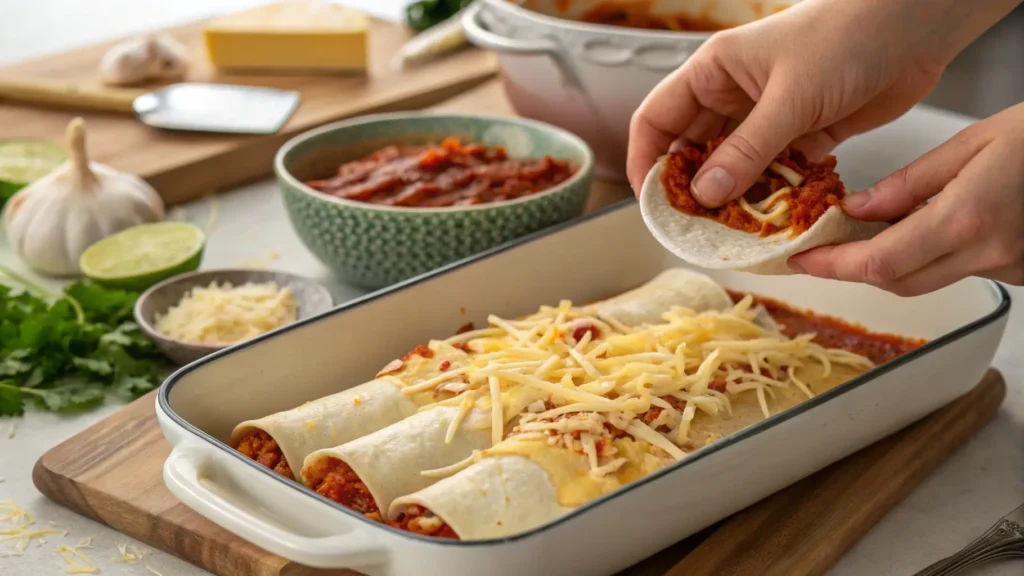
Filling Ideas Beyond Just Chicken
One of the best things about a good chicken enchilada recipe is how customizable it can be. While seasoned shredded chicken is the star, it’s the supporting cast — beans, veggies, rice, spices, and cheese — that makes each bite memorable.
Here are some delicious additions you can roll up alongside your chicken:
| Add-In | Flavor Boost | Tip |
|---|---|---|
| Black or pinto beans | Earthy | Mash lightly for smoother texture |
| Roasted peppers | Smoky, sweet | Slice thin to avoid bulkiness |
| Corn | Sweet crunch | Use fresh or frozen |
| Jalapeños | Heat | Remove seeds for less spice |
| Cooked rice | Filler | Use Mexican rice for more flavor |
| Spinach | Earthy | Sauté briefly to remove moisture |
A well-built chicken enchilada recipe layers more than just meat — it layers flavor, texture, and warmth. Keep the filling evenly distributed so every bite delivers a balanced taste.
Proper Layering for Oven-Perfect Results
There’s an art to assembling the perfect pan of enchiladas. Sloppy layering can lead to soggy tortillas, uneven baking, or dry filling. Follow these foolproof steps to keep your chicken enchilada recipe looking and tasting like it came from a pro kitchen:
- Start With a Sauce Base
Before you even roll your first tortilla, spread ¼ cup of enchilada sauce on the bottom of your baking dish. This prevents sticking and gives the bottom layer that extra punch of flavor. - Roll With Precision
Add 2–3 tablespoons of chicken filling into each tortilla. Don’t overfill — tightly rolled enchiladas bake more evenly and hold their shape better. - Place Seam-Side Down
Always place each enchilada seam-side down in the dish. This keeps them sealed and prevents unraveling during baking. - Layer With Sauce and Cheese
Once all enchiladas are rolled and placed, pour sauce generously over the top. Use a spoon or spatula to ensure the sauce covers all exposed edges. Then sprinkle shredded cheese generously across the top. - Bake Covered First, Then Uncover
Cover the dish with foil for the first 20 minutes to let everything steam and melt together. Uncover for the final 10–15 minutes to crisp the edges and bubble the cheese.
Pro Tip: Let your enchiladas rest for 5–10 minutes after baking. This allows everything to set and prevents hot fillings from spilling out when sliced.
Your chicken enchilada recipe deserves this kind of attention — because when you build layers with intention, the results speak for themselves.
Don’t miss our Ultimate Wagyu Ground Beef Recipe Guide for more assembly-ready dishes with bold flavor.
Cooking and Baking Chicken Enchiladas
Covered or Uncovered: What Works Best?
One of the most common questions when following any chicken enchilada recipe is whether to bake them covered or uncovered. The answer? Both — at different times.
Start Covered:
Covering your enchiladas with foil for the first 20 minutes helps everything melt together. It allows steam to circulate, softening the tortillas and ensuring your filling stays moist.
Then Uncover:
Uncover for the final 10–15 minutes to get those delicious golden-brown edges and slightly crisped cheese on top. This final step makes a big difference in texture — no soggy tops, no dry fillings, just perfectly finished enchiladas.
| Bake Stage | Time | Oven Temp | Purpose |
|---|---|---|---|
| Covered | 20 min | 375°F | Steams enchiladas, melts cheese |
| Uncovered | 10–15 min | 375°F | Browns cheese, crisps edges |
Pro Tip: If using flour tortillas, uncovering for too long may dry them out. With corn tortillas, they can handle a bit more time exposed for extra texture.
Time and Temperature Tips for Every Oven
Even the best chicken enchilada recipe can go sideways if your oven’s off — literally. Most enchiladas bake well at 375°F for 30–35 minutes total, but it’s not just about temperature. Here are some smart tips to help:
1. Use the Middle Rack:
This ensures even heat distribution. The top rack may brown cheese too quickly, while the bottom can cause sauce to burn.
2. Watch for Bubbling Edges:
When you see sauce bubbling along the edges and cheese fully melted, your enchiladas are ready. If it’s not bubbling, give it 5 more minutes.
3. Don’t Overbake:
Overcooked enchiladas dry out fast — especially if your filling is lean like chicken breast. Stick to 30–35 minutes max, and always use foil for the first part of the bake.
4. Let It Rest:
Resting for 5–10 minutes after baking allows the dish to settle. It’s less messy to serve, and the flavors have time to meld. Trust us, this makes your chicken enchilada recipe taste even better.
Want that restaurant-style finish? Add a quick broil for 1–2 minutes right at the end. Just keep a close eye to avoid burning the cheese.
Looking for other slow-cooked, melt-in-your-mouth favorites? Try our Tender Slow Cooker Cube Steak Recipe to discover more comfort food classics.
Common Mistakes and How to Fix Them
Overstuffed? Undercooked? Here’s What to Do
Even the most well-meaning chicken enchilada recipe can go sideways if a few details are missed. The good news? These mistakes are totally fixable — and avoidable the next time around.
Let’s break down the biggest enchilada errors and how to save dinner:
Mistake #1: Overfilling the Tortillas
It’s tempting to pack them full, but overstuffed enchiladas break apart and bake unevenly. Keep the filling to about 2–3 tablespoons max per tortilla. This keeps the roll tight, allows space for sauce, and ensures your chicken enchilada recipe bakes beautifully.
Mistake #2: Not Prepping Tortillas Properly
Dry or cold tortillas are a common culprit for rips. Warm corn tortillas in a skillet, steam them, or dip lightly in sauce to make rolling smooth and stress-free.
Mistake #3: Not Enough Sauce on Top
If your enchiladas are dry after baking, chances are you didn’t use enough sauce. A good chicken enchilada recipe should have sauce on the bottom, inside, and generously on top. Think of the sauce as your insurance policy for a moist, flavorful bake.
Mistake #4: Skipping the Rest Time
Cutting into your enchiladas too soon can turn a tidy tray into a messy plate. Let them rest for 5–10 minutes after baking. This simple step helps everything firm up and lets the flavors soak in.
Sauce or Cheese Troubleshooting Tips
Sometimes it’s not the tortilla or the filling — it’s the topping. If you’ve made a chicken enchilada recipe and the cheese came out greasy or the sauce too thin, try these fixes:
1. Cheese Oozing Too Much Oil?
Use low-moisture shredded cheese. Pre-shredded blends like Monterey Jack or cheddar-mix are perfect. Avoid fresh mozzarella — it releases too much water and oil.
2. Sauce Too Watery?
Thicken store-bought sauce by simmering it for 5–10 minutes before pouring. You can also add a spoonful of tomato paste or cornstarch slurry.
3. Sauce Burned on the Edges?
Use a glass or ceramic baking dish instead of metal. And make sure sauce fully covers each enchilada to prevent burning during baking.
Bonus Fix: If your chicken enchilada recipe tastes flat, try adding acidity — a squeeze of lime or splash of vinegar can bring it back to life.
Looking for inspiration beyond chicken? Try our Best Venison Steak Recipes for bold, flavor-packed meals that never fall flat.
Serving and Storing Chicken Enchiladas

Toppings and Sides to Make It a Full Meal
You’ve pulled off the perfect chicken enchilada recipe, but what should you serve with it? The right toppings and side dishes can elevate the entire experience — turning a simple tray of enchiladas into a restaurant-worthy dinner spread.
Here are some ideas that pair beautifully with your homemade enchiladas:
Top It Off:
- Chopped cilantro: For freshness and color
- Sour cream or Mexican crema: Balances the spice
- Sliced avocados or guacamole: Adds richness
- Diced onions: For a bold, raw crunch
- Pickled jalapeños: A tangy heat boost
- Shredded lettuce or cabbage: Adds crispness
These toppings work with any chicken enchilada recipe, whether you go for spicy red sauce or creamy green. Want a Tex-Mex twist? Try topping with crumbled cotija cheese and a drizzle of chipotle mayo.
Serve It With:
| Side Dish | Why It Works |
|---|---|
| Mexican rice | Absorbs sauce and adds heartiness |
| Refried or black beans | Protein-rich and traditional |
| Elote (Mexican street corn) | Creamy, tangy, and flavorful |
| Chopped salad with lime vinaigrette | Balances richness |
| Chips & salsa or queso | Always a crowd-pleaser |
These sides round out your chicken enchilada recipe so it feels complete — and feeds a crowd without stress.
Freezing and Reheating Without Losing Flavor
One of the biggest benefits of a solid chicken enchilada recipe is how well it freezes. Whether you’re meal prepping or saving leftovers, enchiladas are one of the few dishes that taste just as good — if not better — the next day.
Here’s how to do it right:
To Freeze:
- Let enchiladas cool completely before wrapping.
- Use foil trays or airtight containers to avoid freezer burn.
- Label with the date and bake instructions.
- Store for up to 3 months for best flavor.
To Reheat:
- From frozen: Bake at 375°F covered for 40–50 minutes.
- From thawed: Bake covered for 25–30 minutes.
- Add a little fresh sauce and cheese before reheating to boost flavor and moisture.
Pro Tip: Assemble a tray of enchiladas (uncooked), cover tightly, and freeze. When ready, bake straight from frozen. This saves time and keeps your chicken enchilada recipe ready-to-go on busy nights.
Whether you’re serving a crowd or meal prepping for the week, storing and reheating enchiladas the right way keeps your hard work intact — and your meals stress-free.
Looking for another make-ahead meal? Check out our Ultimate Wagyu Ground Beef Recipe Guide for another freezer-friendly favorite.
Conclusion: Make the Chicken Enchilada Recipe Your Own
Final Tips for Personalizing Your Recipe
Now that you’ve explored every angle of crafting the ultimate chicken enchilada recipe, it’s time to make it yours. The beauty of enchiladas lies in their flexibility — whether you prefer spicy or mild, creamy or smoky, traditional or Tex-Mex, there’s a version that fits your table.
Here’s how to personalize your plate:
- Go bold with fillings like chipotle chicken, roasted veggies, or seasoned rice
- Switch up sauces — try creamy jalapeño, tomatillo verde, or even mole
- Make it gluten-free using corn tortillas and grain-free enchilada sauce
- Turn it into a casserole by layering tortillas flat, lasagna-style
You don’t have to be a chef to nail this dish. Just follow a proven chicken enchilada recipe, take your time with layering, and don’t skimp on seasoning.
Why You’ll Keep Coming Back to This Guide
Let’s face it — once you’ve made a great tray of enchiladas, it becomes a go-to comfort food. Whether it’s for weeknight meals, meal prep, potlucks, or freezer-friendly dinners, this chicken enchilada recipe hits every mark:
- Easy to customize
- Loaded with flavor
- Family- and freezer-friendly
- Classic enough to impress, simple enough to make anytime
Don’t miss our Best Smoked Fish Brine Recipe to master another kitchen essential.
Now grab your tortillas, heat up the oven, and get rolling — because the best chicken enchilada recipe is the one you make your own.
FAQs About Chicken Enchilada Recipes
What is the secret to good enchiladas?
The secret to a truly good chicken enchilada recipe lies in the layering of flavor. That means starting with well-seasoned chicken, using a bold and balanced enchilada sauce, and ensuring your tortillas are warmed before rolling. Also, don’t skip the resting time after baking — it helps the dish set and makes every bite cohesive.
What ingredients go in chicken enchiladas?
A classic chicken enchilada recipe includes shredded chicken, corn or flour tortillas, enchilada sauce (red or green), and cheese. Extras like onions, beans, jalapeños, or rice can be added for more flavor and texture. Don’t forget toppings like sour cream, cilantro, and avocado for serving.
What are the ingredients in real good chicken enchiladas?
Real good enchiladas go beyond the basics. Think of tender shredded chicken cooked with garlic and spices, homemade red or tomatillo sauce, fresh tortillas, and layers of cheese. Some versions also include roasted peppers, black beans, or chipotle for depth — elevating any chicken enchilada recipe to the next level.
What are some common mistakes when making chicken enchiladas?
Common mistakes include overfilling tortillas, not using enough sauce, skipping the warm-up for tortillas, and overbaking. Another issue? Not seasoning the chicken properly. All of these can be avoided by following a tested chicken enchilada recipe and prepping ingredients ahead of time.
What typically goes inside an enchilada?
Traditionally, enchiladas are filled with meat (like chicken), cheese, onions, and beans. For a well-rounded chicken enchilada recipe, shredded chicken is the primary filling, paired with other mix-ins such as roasted veggies or rice for added flavor and structure.
What do you normally put in enchiladas?
Most recipes call for a protein (like chicken), cheese, and enchilada sauce, all wrapped in tortillas. A reliable chicken enchilada recipe also includes spices like cumin and chili powder, plus extras like green chilies or tomatoes depending on your taste.
Are corn or flour tortillas better for chicken enchiladas?
Corn tortillas are the traditional choice and add an authentic flavor and texture. Flour tortillas are easier to roll and more forgiving. The best chicken enchilada recipe may use either, depending on preference — or even a mix of both!
What are enchiladas seasoned with?
Seasoning can include cumin, chili powder, paprika, garlic, oregano, and black pepper. Many chicken enchilada recipes also rely on the flavor of the sauce and toppings like pickled jalapeños or lime juice to add brightness and heat.
What are chicken enchiladas filled with?
Most commonly, a chicken enchilada recipe includes shredded chicken, cheese, onions, and a bit of enchilada sauce. You can also add corn, black beans, or sautéed vegetables to customize your filling.
Do I cook enchiladas covered or uncovered?
Start covered to steam and melt the cheese evenly. Uncover during the last 10–15 minutes to get a golden top. Following this step is critical in any successful chicken enchilada recipe.
What is the best canned enchilada sauce?
Top picks for canned sauce include Hatch, Las Palmas, and Old El Paso. Choose one that matches your heat preference and adjust the flavor with fresh garlic or lime juice. Even store-bought sauces can elevate your chicken enchilada recipe if enhanced properly.
Have you given our recipe a try?
There are no reviews yet. Be the first one to write one.
